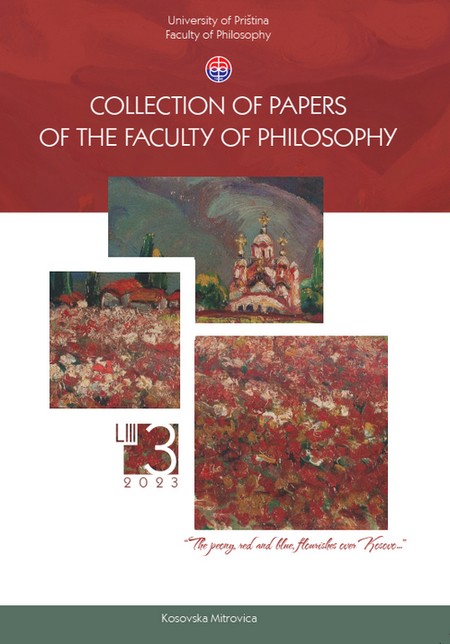Georgi Mitrofanović’s Fresco Composition with Representations of Medieval Rulers in the Southern Apse of the Hilandar Refectory
Georgi Mitrofanović’s Fresco Composition with Representations of Medieval Rulers in the Southern Apse of the Hilandar Refectory
Author(s): Nikolaos L. Dionysopoulos, Vesna D. MilanovićSubject(s): History of Art
Published by: Филозофски факултет, Универзитет у Приштини
Keywords: Georgije Mitrofanović; refectory of the Hilandar Monastery; fresco-painting of the 17th century; portraits (representations) of medieval rulers; Jesus Christ the Angel of Great Counsel.
Summary/Abstract: The composition with representations of medieval rulers is a unique structure within the fresco-ensemble of the Hilandar refectory, which was signed by the painter Georgije Mitrofanović in 1621/1622, replacing the previous, three centuries older works. It depicts Serbian King Milutin and the Byzantine Emperor Andronikos II Palaiologos in a paraphrased version of the solution found in medieval portraits within the narthex of the Catholicon of the Monastery. With some modifications, it was incorporated into a new programmatic context, together with figures of Saint Simon the Monk (most likely representing the former King Uroš I) and Saint Stefan Dečanski. The formation of the latter pair is based on iconographic patterns that combine the initial theme of the pious rulers’ patronage with motifs of martyrdom and unwavering faith. The new visual ensemble, featuring figures of pious and orthodox rulers from the medieval past, is completed by the insertion of the symbol of the cross between them and by placing all the figures under the protection and blessing of Christ, the Angel of Great Counsel. Why did the creator of this pictorial program connect the bygone rulers, patrons of the monastery, with a distinctive, non-traditional representation of Christ? How does the passage of time since the medieval period affect the reception of this iconographic group? What does the medallion with the cross and Christogram signify in the given arrangement? These and similar questions, mostly overlooked in previous discussions focused on the restoration aspect of Mitrofanović’s work, stem from the endeavour to understand what was achieved through the characteristics and circumstances of the era in which the refectory was repainted, particularly in the context of the challenges faced by the Orthodox community within the then Ottoman state.
Journal: Зборник радова Филозофског факултета у Приштини
- Issue Year: 53/2023
- Issue No: 3
- Page Range: 279-315
- Page Count: 37
- Language: English

